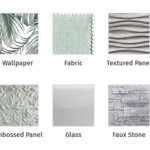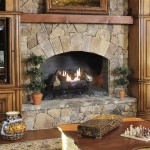What Tile to Use for a Fireplace Hearth: A Comprehensive Guide
Selecting the appropriate tile for a fireplace hearth requires careful consideration of aesthetics, durability, and safety. The hearth, acting as a non-combustible barrier, protects flooring materials from stray embers and radiant heat. Choosing the right tile involves understanding the specific properties of different materials and their suitability for withstanding the demands of a fireplace environment.
This article provides a detailed exploration of various tile options for a fireplace hearth, highlighting their characteristics, benefits, and potential drawbacks, allowing homeowners to make informed decisions that balance visual appeal with functional performance and safety standards.
Understanding Hearth Requirements and Tile Properties
Before exploring specific tile types, it’s essential to understand the requirements for a fireplace hearth and the critical properties of tile materials. Building codes and safety regulations often dictate specific dimensions and non-combustible material requirements for hearth extensions. These regulations are designed to prevent fires from spreading to surrounding combustible flooring or furnishings.
The hearth must extend a certain distance both in front of and to the sides of the firebox opening. The exact dimensions vary depending on the size and type of fireplace. Consulting local building codes and fireplace installation manuals is crucial to ensure compliance.
Several tile properties are particularly relevant to their performance as a hearth material:
- Non-combustibility: The tile must be non-combustible, meaning it will not ignite or contribute to the spread of flames.
- Heat Resistance: The tile must be able to withstand high temperatures without cracking, warping, or discoloring.
- Durability: The tile must be resistant to chipping, scratching, and impact from dropped objects or fireplace tools.
- Low Porosity: Tiles with low porosity are less susceptible to staining from soot, ash, and spills.
- Slip Resistance: While less critical than for flooring applications, some degree of slip resistance is desirable, especially if the hearth is frequently walked on.
Different tile materials possess varying degrees of these properties, influencing their suitability for use as a fireplace hearth.
Exploring Different Tile Options
Several types of tile are commonly used for fireplace hearths, each with its own set of advantages and disadvantages. A thorough evaluation of these options is essential to achieving a visually appealing and functionally effective hearth.
Ceramic Tile: Ceramic tile is a popular and versatile option for fireplace hearths. It is manufactured from clay that is fired at high temperatures, resulting in a durable and heat-resistant material. Ceramic tile offers a wide range of colors, sizes, patterns, and finishes, making it adaptable to various design styles. Its relatively low cost makes it an appealing option for budget-conscious homeowners.
However, standard ceramic tiles are generally more porous than porcelain tiles, making them slightly more susceptible to staining. Glazed ceramic tiles offer improved stain resistance, but the glaze can chip or crack over time with exposure to extreme heat or impact. When selecting ceramic tile, ensure it is rated for high-temperature applications.
Porcelain Tile: Porcelain tile is a denser and more durable type of ceramic tile. It is made from finer clay and fired at higher temperatures, resulting in a tile with lower porosity and greater resistance to heat, staining, and scratching. Porcelain tile is an excellent choice for fireplace hearths due to its superior performance and longevity.
Porcelain tiles also are available in a wide selection of colors, patterns, and styles, including those that mimic natural stone or wood. This provides aesthetic flexibility for homeowners seeking specific design looks. However, porcelain tile is typically more expensive than standard ceramic tile.
Stone Tile: Natural stone tiles, such as granite, marble, slate, and travertine, offer a unique and elegant aesthetic for fireplace hearths. Each stone type has its own distinctive characteristics and visual appeal. Stone tiles are durable and can withstand high temperatures, making them suitable for fireplace applications. However, some stone types are more porous than others and may require sealing to prevent staining.
Granite is a particularly durable and heat-resistant option, making it an excellent choice for high-heat areas. Marble, while beautiful, is more susceptible to staining and scratching than granite and requires more diligent maintenance. Slate offers a rustic and textured look and is relatively durable, but it can be prone to chipping.
Travertine has a distinctive porous texture and requires sealing to prevent moisture absorption and staining. The cost of natural stone varies depending on the type, rarity, and origin of the stone. Installation can also be more complex and expensive than with other tile types.
Quarry Tile: Quarry tile is a type of unglazed tile made from natural clay or shale. It is known for its durability, slip resistance, and rustic appearance. Quarry tile is highly resistant to heat and staining, making it a practical choice for fireplace hearths. It is often available in earthy tones and square or rectangular shapes. However, the limited color and design options may not appeal to all homeowners.
Glass Tile: Glass tile can add a unique and contemporary look to a fireplace hearth. It is available in a wide range of colors, sizes, and shapes, including mosaic patterns. While glass tile is non-combustible, its heat resistance can vary depending on the type and thickness of the glass. It is essential to choose glass tile specifically designed for high-temperature applications.
Some glass tiles may be prone to cracking or discoloration when exposed to direct flame or extreme heat. Glass tile is also more susceptible to scratching than other tile types and may require more careful maintenance. Installation can be more challenging than with other tiles, requiring specialized tools and techniques.
Factors Influencing the Selection Process
Several factors should be considered when selecting the appropriate tile for a fireplace hearth. These factors encompass both practical and aesthetic considerations, ensuring that the chosen tile meets the needs and preferences of the homeowner while adhering to safety standards.
Style and Aesthetics: The tile should complement the overall style and design of the room and the fireplace itself. Consider the color, pattern, size, and texture of the tile and how it integrates with the surrounding décor. For a traditional fireplace, natural stone or classic ceramic tiles may be appropriate. For a more contemporary design, glass or large-format porcelain tiles could be considered.
Budget: The cost of different tile materials varies significantly. Natural stone and specialty tiles tend to be more expensive than standard ceramic or porcelain tiles. Consider the cost of the tile itself, as well as the cost of installation materials and labor. Obtaining quotes from multiple installers can help ensure a competitive price.
Maintenance Requirements: Different tile types require varying levels of maintenance. Stone tiles, particularly those with porous surfaces, often require sealing to prevent staining. Regular cleaning is necessary to remove soot, ash, and dirt. Consider the amount of time and effort required to maintain the tile and choose a material that fits your lifestyle.
Installation Considerations: The difficulty of installation can vary depending on the tile type and size. Large-format tiles or intricate mosaic patterns may require professional installation. Ensure that the installer has experience working with the chosen tile material and is familiar with proper installation techniques for fireplace hearths. Proper substrate preparation is crucial for a successful installation and to prevent cracking or movement of the tile.
Safety Standards: Regardless of the chosen tile material, ensure that it meets local building codes and safety standards for fireplace hearths. Confirm that the tile is non-combustible and can withstand the expected operating temperatures of the fireplace. Proper installation and adherence to safety guidelines are essential to prevent fires and ensure the safe operation of the fireplace.
Long-Term Durability: The final tile selection should offer long lasting value and performance. Choosing the right durable tile will ensure minimal repairs and replacement of the tile in the long run.
By carefully evaluating these factors, homeowners can select the ideal tile for their fireplace hearth, creating a visually appealing and functionally sound focal point for their living space.
/102661017-6a23c040b71843379188b96b21ac1a08.jpg?strip=all)
How To Tile A Fireplace

How To Tile A Fireplace Surround And Hearth Build Basic

What Are The Best Tiles For A Fireplace Rotherham Centre

How To Tile Over A Brick Hearth Shine Your Light

Remodeling A Fireplace With Tile

Fireplace Tiles Classique Floors Tile Portland Or

How To Tile A Fireplace My Uncommon Slice Of Suburbia

Tile Inspiration For Fireplaces And Hearths The Otto House

How To Install A Marble Herringbone Fireplace Surround And Hearth
Heat Resistant Tiles Can You Use Around A Wood Burner British Ceramic Tile
Related Posts








